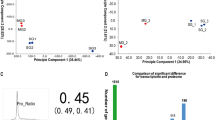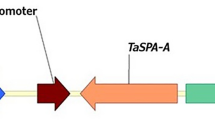Abstract
RECENT work1–4 has added considerably to our knowledge of the distribution of nutrients, particularly the B vitamins, in the wheat grain. The scutellum portion of the germ is the main deposit of vitamin B1, while the bran is rich in nicotinic acid and iron. Riboflavin is more uniformly distributed throughout the grain, although the highest concentrations are found in the germ. Further work has now shown that the endosperm, far from being uniform in composition, has a complex and graded structure.
This is a preview of subscription content, access via your institution
Access options
Subscribe to this journal
Receive 51 print issues and online access
$199.00 per year
only $3.90 per issue
Buy this article
- Purchase on Springer Link
- Instant access to full article PDF
Prices may be subject to local taxes which are calculated during checkout
Similar content being viewed by others
References
Hinton, J. J. C., J. Soc. Chem. Ind., 61, 143 (1942); Biochem. J., 38, 214 (1944).
Barton-Wright, E. C., and Booth, R. G., Biochem. J., 37, 25 (1943).
Barton-Wright, E. C., Biochem. J., 38, 314 (1944).
Kent, N. L., Simpson, A. G., Jones, C. R., and Moran, T., "High Vitamin Flour" (Ministry of Food, October 1944).
Cobb, N. A., Dept. Agr. N.S. Wales Misc. Pub. 539 (1905).
Cereal Chem., 18, 678 (1941).
Pringle, W. J. S., unpublished work.
Author information
Authors and Affiliations
Rights and permissions
About this article
Cite this article
MORAN, T. Nutrients in Wheat Endosperm. Nature 155, 205–206 (1945). https://doi.org/10.1038/155205b0
Issue Date:
DOI: https://doi.org/10.1038/155205b0
Comments
By submitting a comment you agree to abide by our Terms and Community Guidelines. If you find something abusive or that does not comply with our terms or guidelines please flag it as inappropriate.



